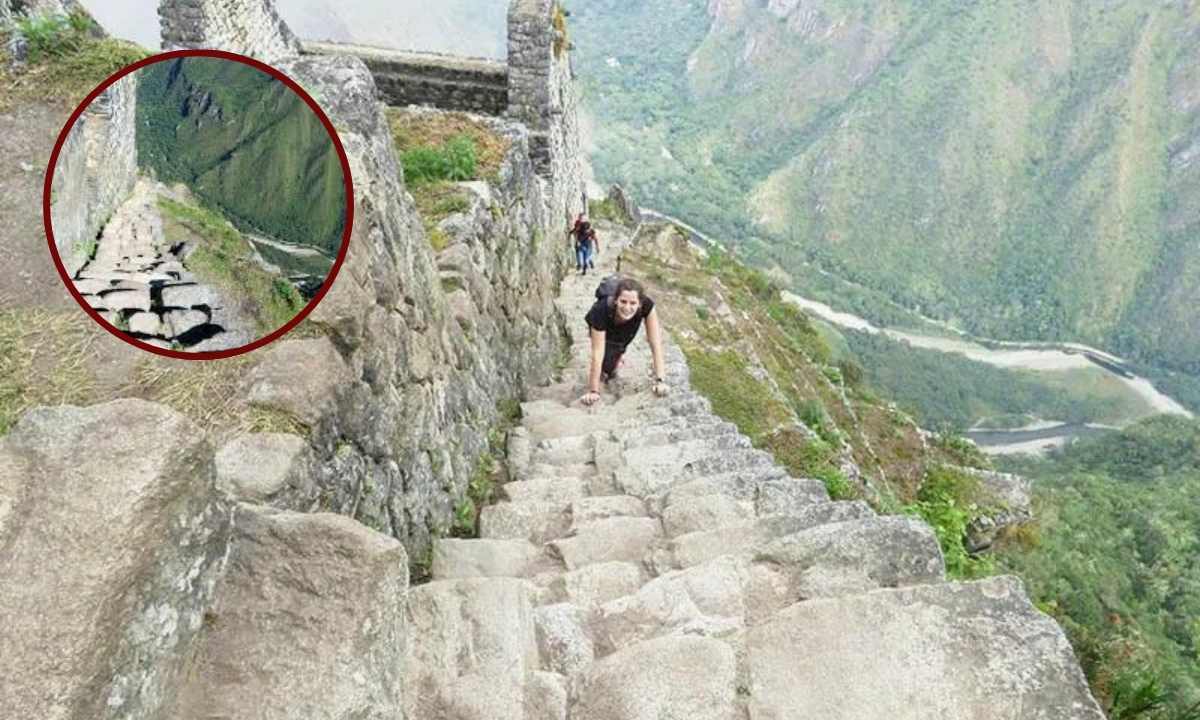The “Stairs of Death” in Huayna Picchu is a thrilling hike that challenges even the bravest adventurers. Located behind the iconic Machu Picchu, this ancient Inca trail offers breathtaking views and a steep, narrow climb that’s not for the faint-hearted. With every step, hikers are rewarded with stunning panoramas of the Andes and a deeper connection to the ancient Inca civilization. Ready to take on the ultimate challenge? Discover what makes the “Stairs of Death” one of the most exhilarating hikes in the world.
The Enigmatic Huayna Picchu: A Journey up the “Stairs of Death”
Nestled behind the iconic citadel of Machu Picchu, Huayna Picchu looms as a formidable yet alluring challenge famously known as the “Stairs of Death.” For those drawn to the thrill of an exhilarating climb, this path offers an unforgettable adventure through the heart of the ancient Inca civilization. Despite its daunting nickname, the trail provides a safe route for the cautious hiker, culminating in breathtaking views that celebrate the architectural brilliance of the Incas.
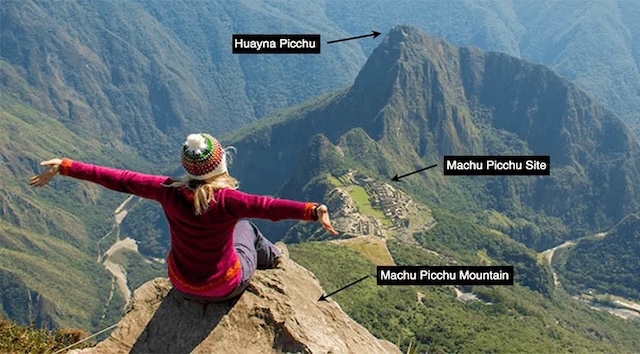
Video
Experience the thrill of descending the steep stairs of Huaynapicchu in this breathtaking video, offering a daring view of Machu Picchu like you’ve never seen before.
History and Significance of Huayna Picchu
Huayna Picchu, translating to “Young Mountain” in Quechua, marks one of Peru’s most iconic peaks. Distinct from Machu Picchu Mountain, this peak towers over the ruins, connected historically through pathways laid by the Incas in the 15th century. The mountain was integral to the sacred city of Machu Picchu, believed to have served as both an observation post and a spiritual site for religious ceremonies. From its heights, the Incas could monitor the approach to their city, blending functionality with sacred purpose.
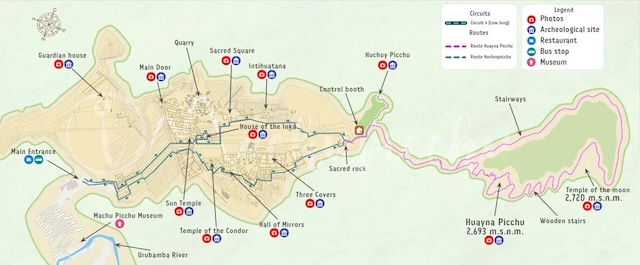
The Huayna Picchu Hike: Distance and Difficulty
The trail to Huayna Picchu stretches approximately 4 kilometers (2.5 miles) round-trip, with a climb of 305 meters (1,000 feet) reaching up to 2,693 meters (8,835 feet) above sea level. Typically requiring between two to three hours to complete, depending on pace, the path is marked by steep and narrow stairways carved directly into the mountain. While the hike is rated moderate to hard, it remains accessible to those who are fit and seeking adventure.
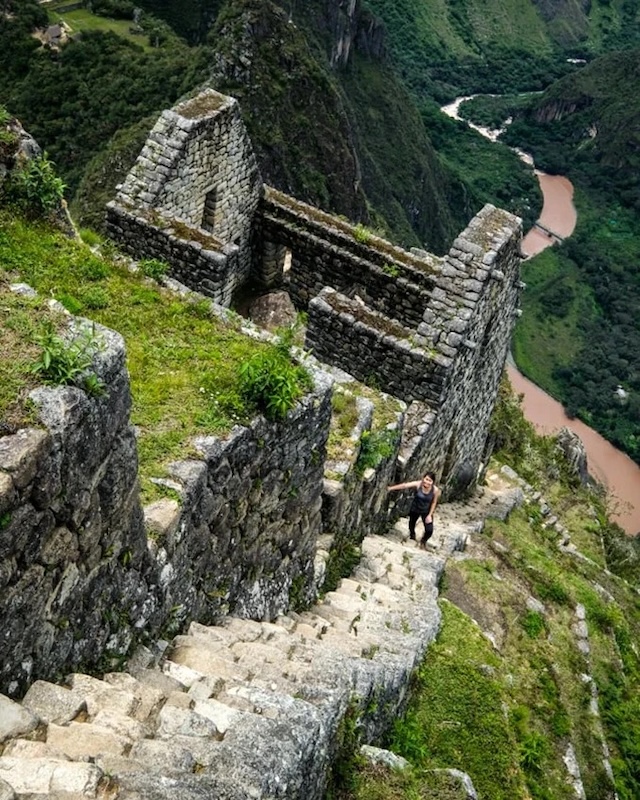
Safety and Precautions
Contrary to its ominous moniker, the “Stairs of Death” are safely navigable with the right precautions. The path’s main hazards are its steep, slick steps, especially during the rainy season. Climbers are advised to wear sturdy shoes, carry sufficient water, and approach the climb with a cautious mindset. Early morning ascents are recommended to avoid the midday heat and the crowds, reducing the risk of heat exhaustion and allowing a more peaceful experience.
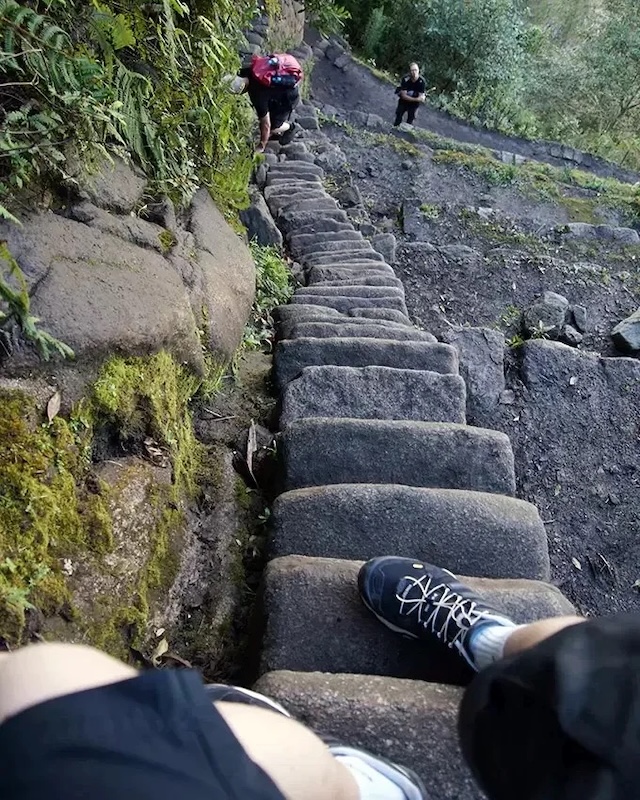
Experiencing the Hike
Ascending Huayna Picchu, hikers face the ancient Inca steps, an architectural marvel providing both a physical challenge and a spiritual passage. These steps, while narrow and steep, offer awe-inspiring views and a palpable sense of history underfoot. Reaching the summit unveils a panoramic vista of Machu Picchu and the surrounding Andean landscape, offering a rewarding experience filled with awe and tranquility.
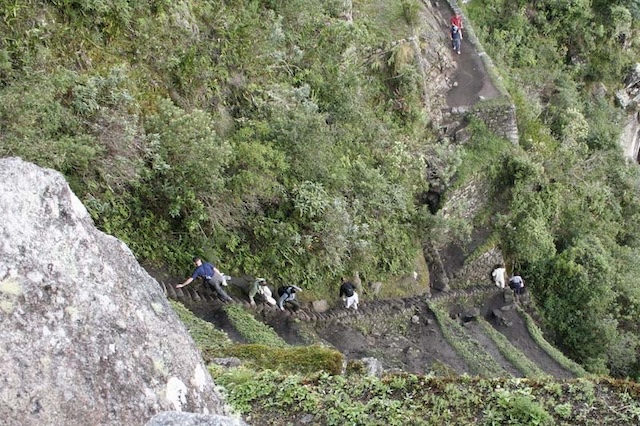
What Hikers Say About Huayna Picchu
Travelers often describe the Huayna Picchu hike as one of the most challenging yet rewarding experiences. The dramatic ascent, coupled with the historical significance of the trail, leaves a lasting impression of accomplishment and wonder. Many reflect on the climb as a ‘natural stairway to heaven,’ offering not just stunning views but also a deep connection to the past.
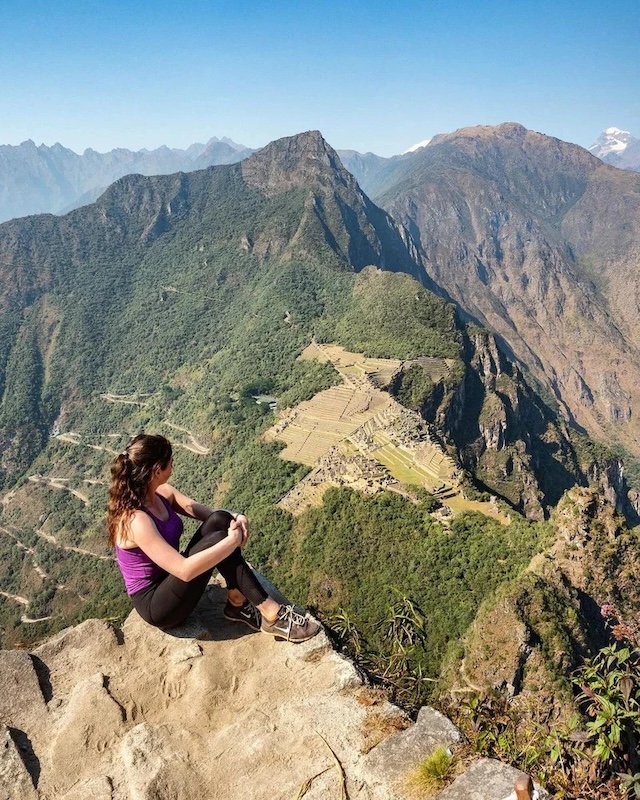
Tips for Future Hikers
- Book in Advance: Due to its popularity, daily hiker numbers are capped at 400. Advance booking is essential.
- Start Early: To avoid heat and crowds, begin your hike early in the morning.
- Stay Hydrated: Ensure you carry enough water and snacks to maintain energy levels throughout the hike.
- Wear Proper Footwear: Choose sturdy, non-slip hiking boots for safety on the steep steps.
- Take Breaks: Allow yourself to rest and absorb the stunning surroundings.
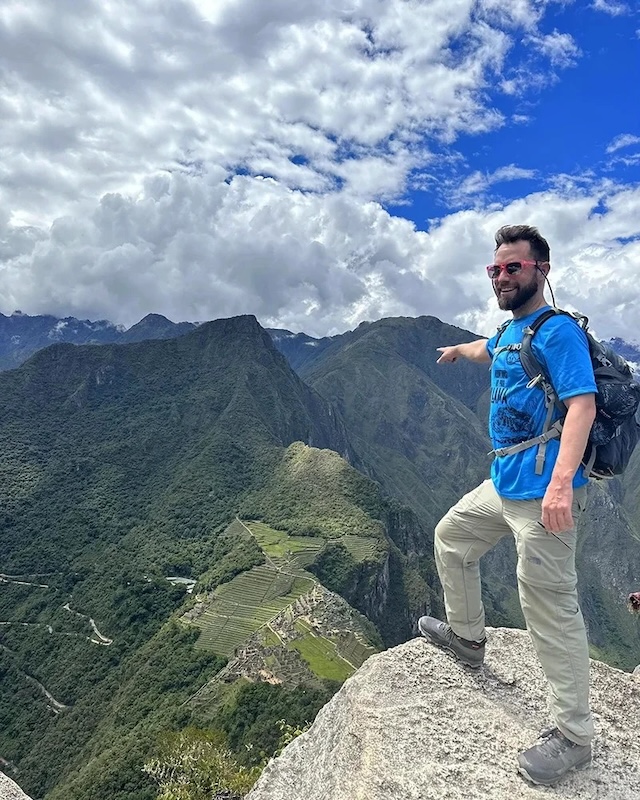
Conclusion
The “Stairs of Death” at Huayna Picchu offers more than just a hike; it is a journey through history, challenging both physically and mentally, yet immensely fulfilling. It stands as a testament to Inca engineering and a must-visit for the adventurous soul, providing a unique glimpse into the past, surrounded by some of the most spectacular natural and archaeological wonders of the world.
Video
Get the ultimate introduction to the wonders of Machu Picchu in this informative and visually stunning video from National Geographic.
